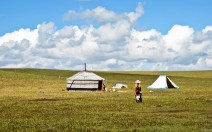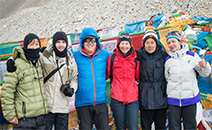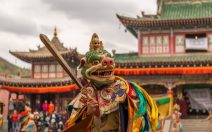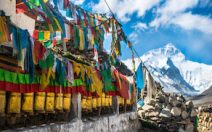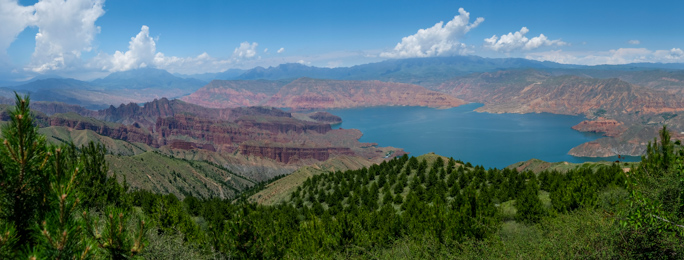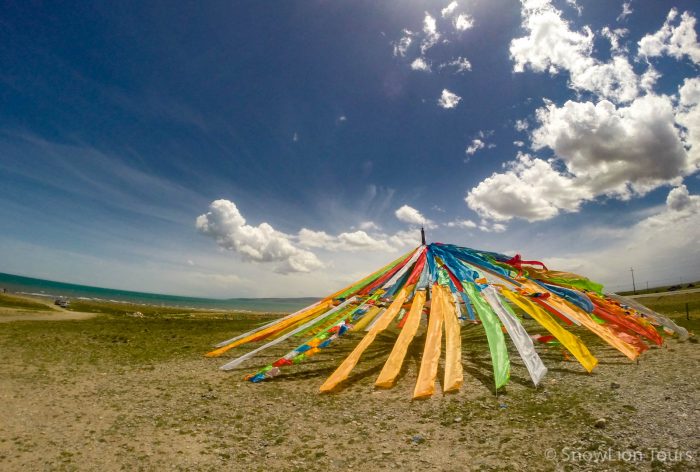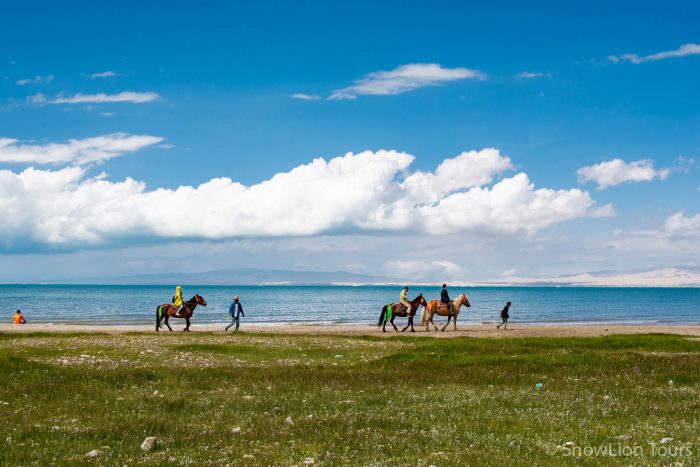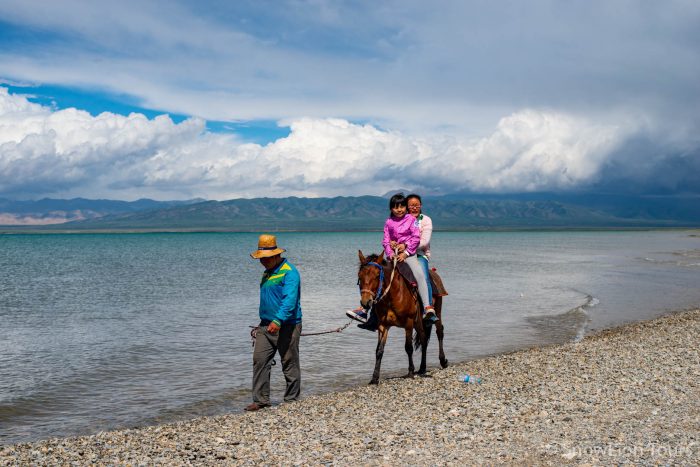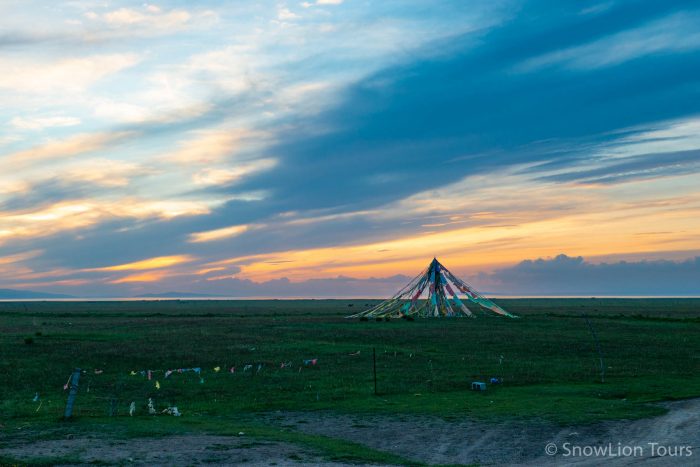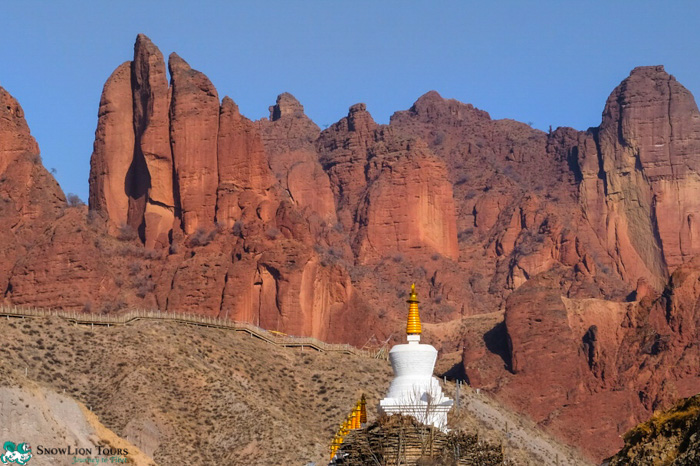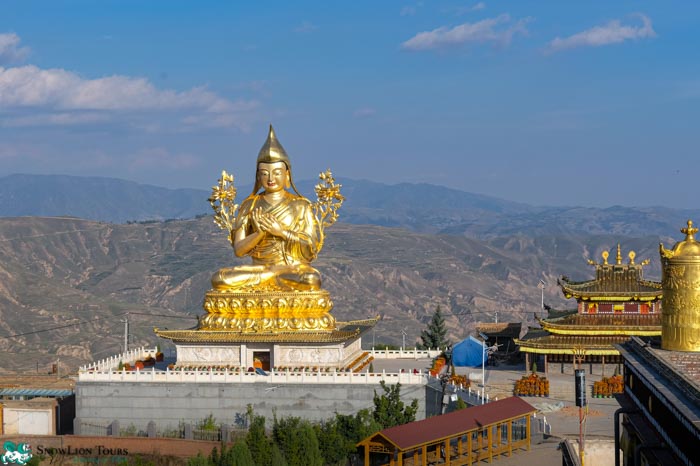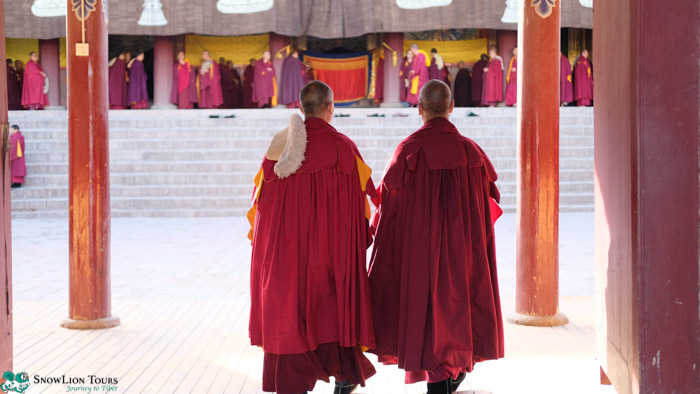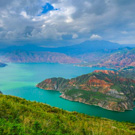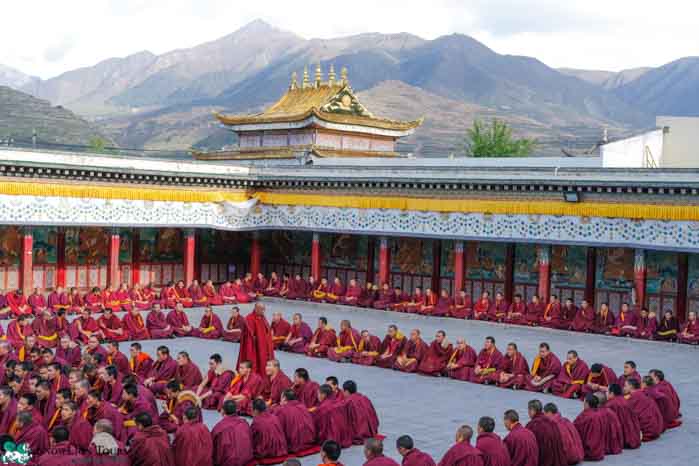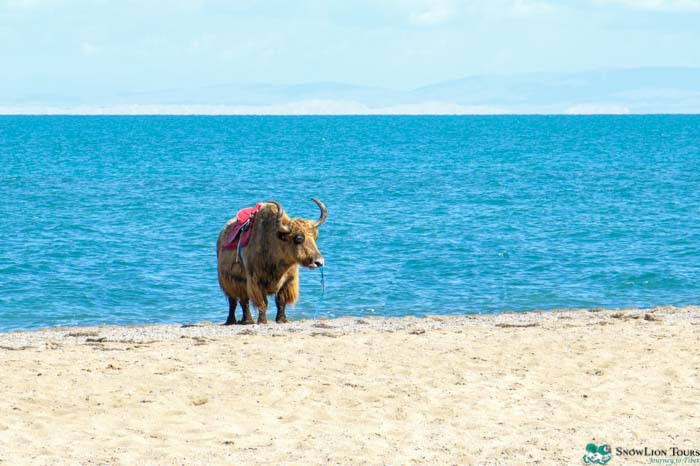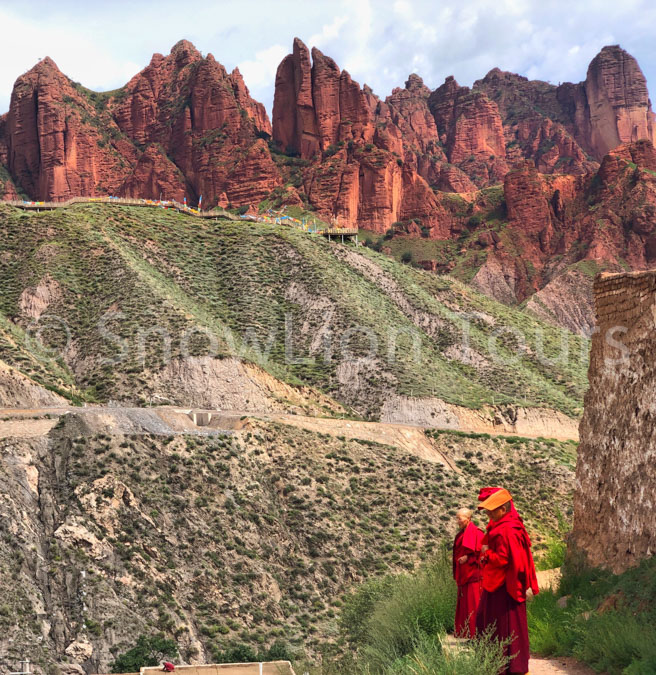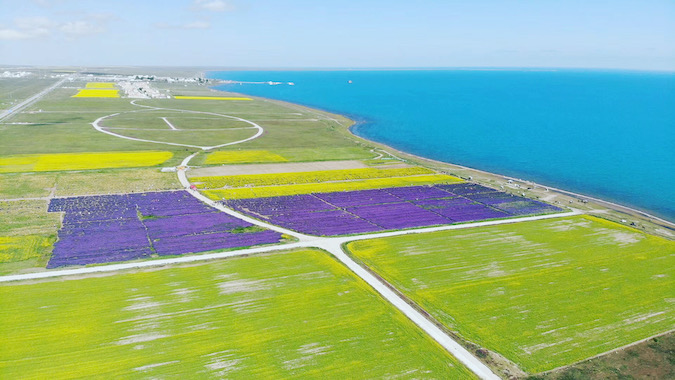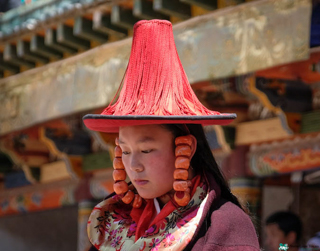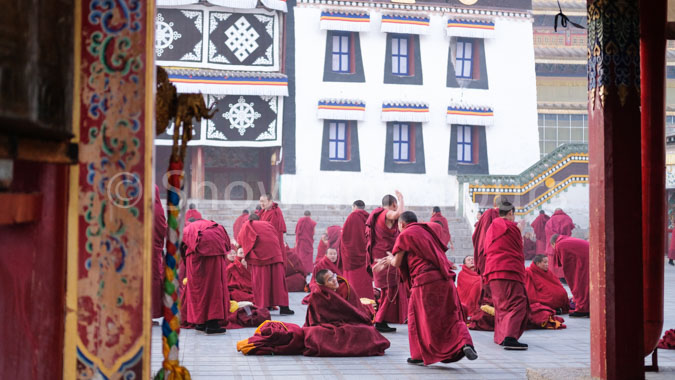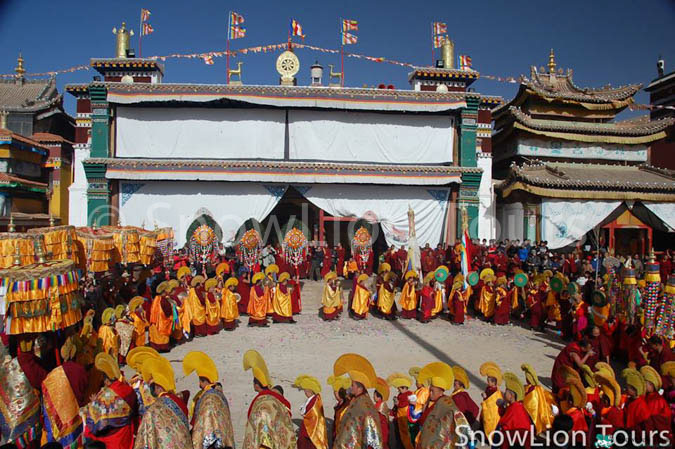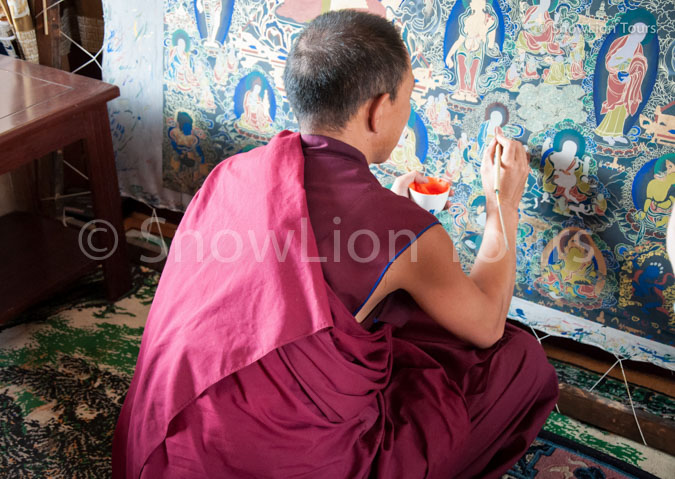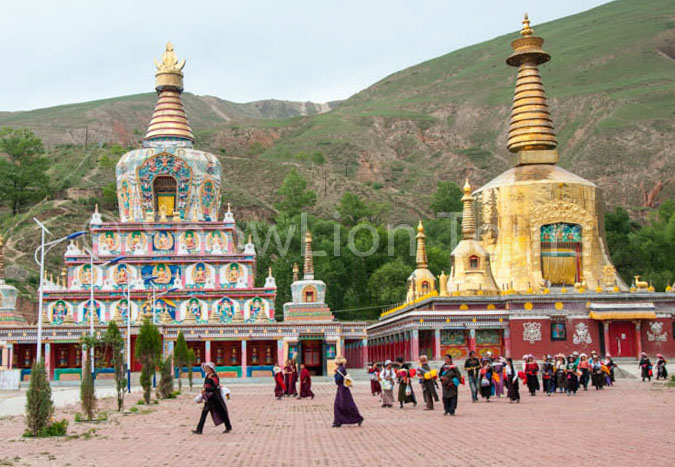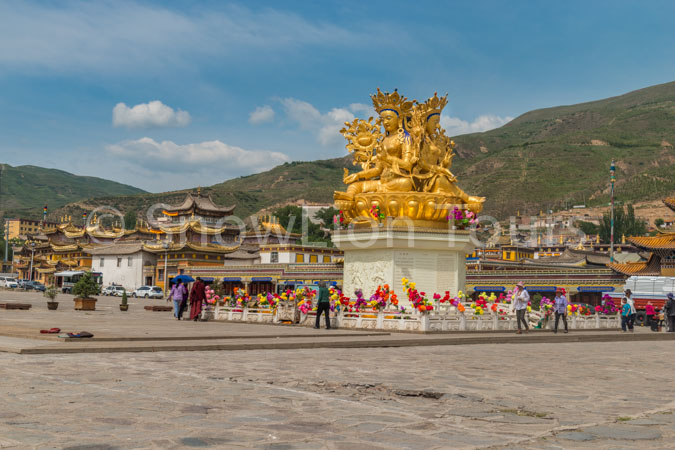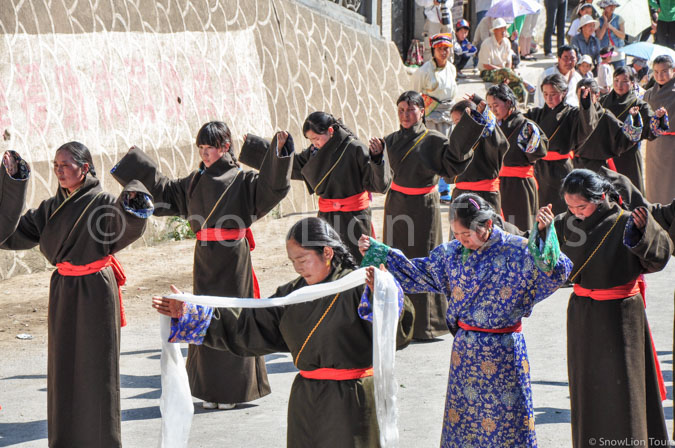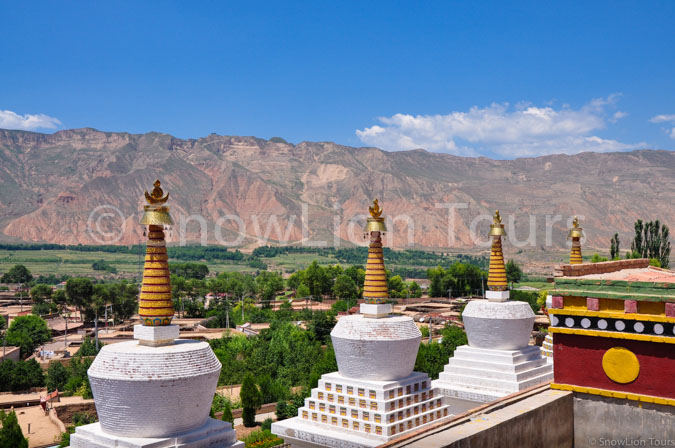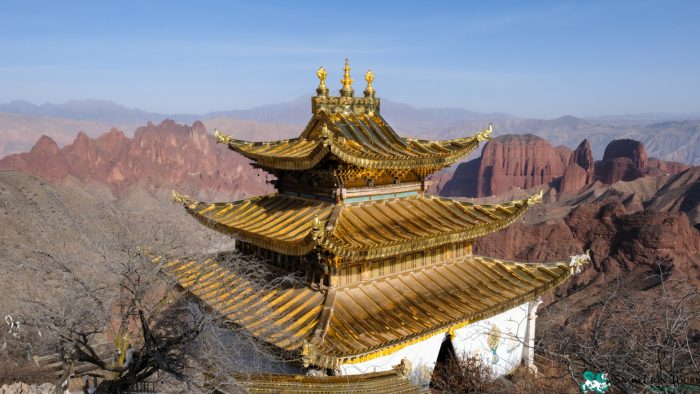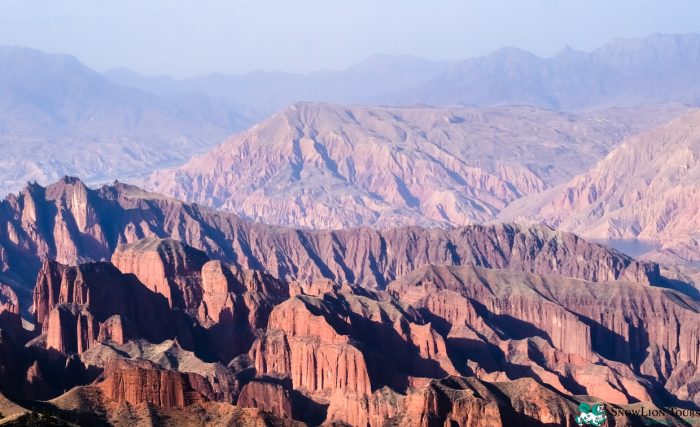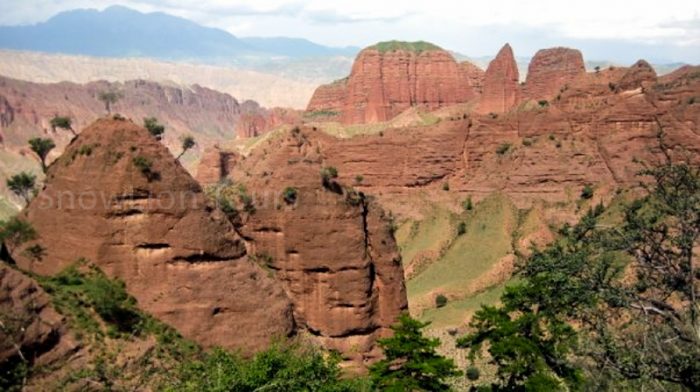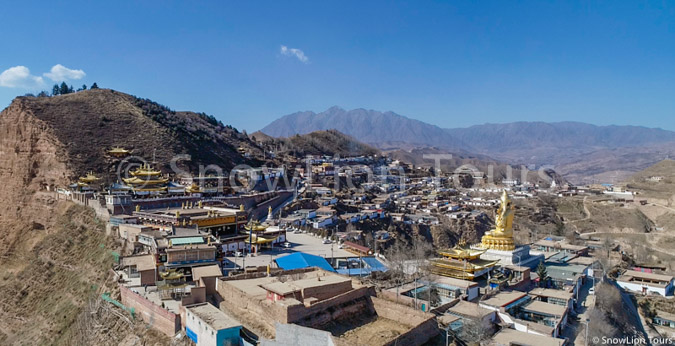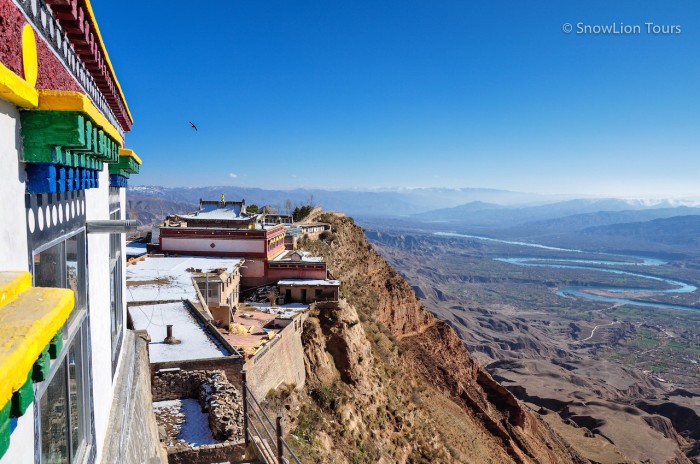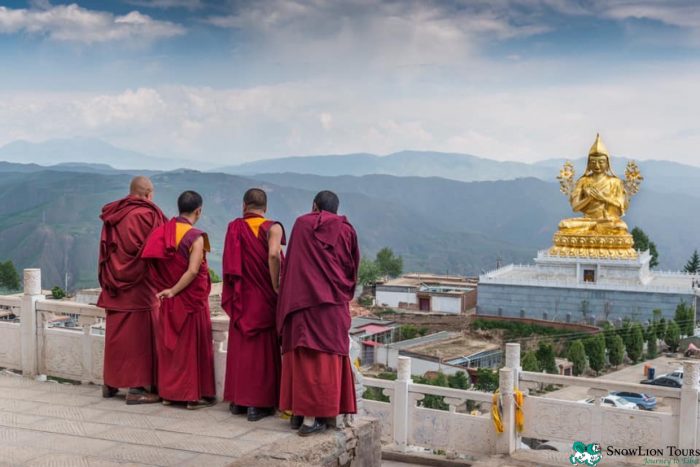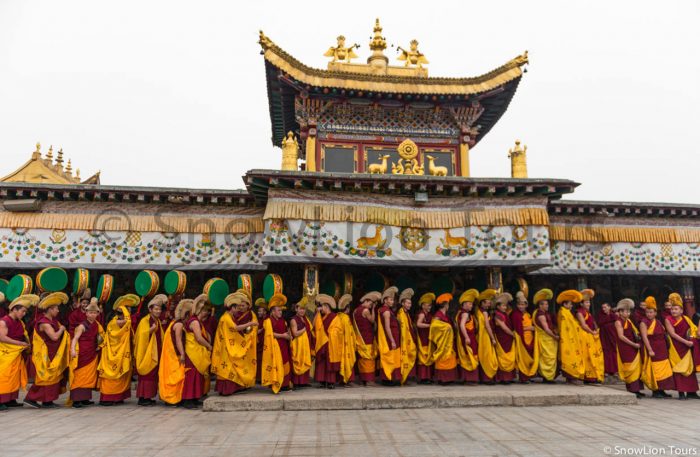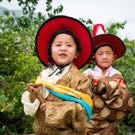Day 1: Xining – Kumbum Monastery – Gui’de (Trika) Alt: 2200 m / 200 km
We will begin our journey by driving to Kumbum Monastery (Ta’er Si) which is located 25km to the west of Xining City.Kumbum Monastery is the largest monastic college in Qinghai province. Originally built in 1357 on the very spot where Je Tsongkapa was born. It is home to 500 monks and well known due to the birth place of Je Tsongkapa, the founder of Gelug tradition of Tibetan Buddhism.
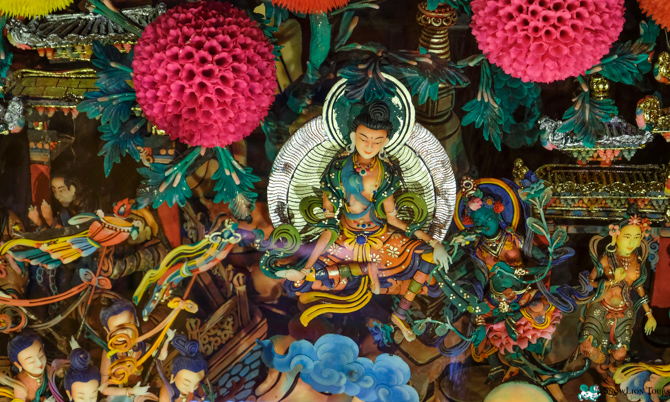
Yak Butter Sculpture in Kumbum Monastery.
Then we will take the scenic route to Guide via Dzongkar Lhatse. Enjoy the landscape of the Tibetan plateau on the top of high mountains. Then we will drive to guide through some colorful mountains along the way. Spend the night in Guide.
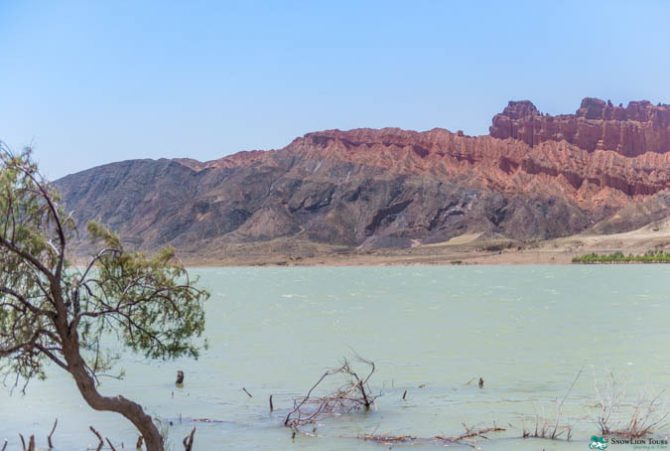
different shapes of red clay mountains in Guide.
Day 2: Gui’de – Kanbula National Park – Achung Namdzong Nunnery – Rebkong / Tongren 2480 m / 200 km.
In the morning, we will drive to Kanbula National Park. This park offers one of the most beautiful sceneries in the area, including canyons, red clay peaks, colourful mountains, forests and a gorgeous turquoise lake. Here, we will spend a few hours hiking between the towering red clay mountains, where we can pay a visit to the meditation cave and a small nunnery.
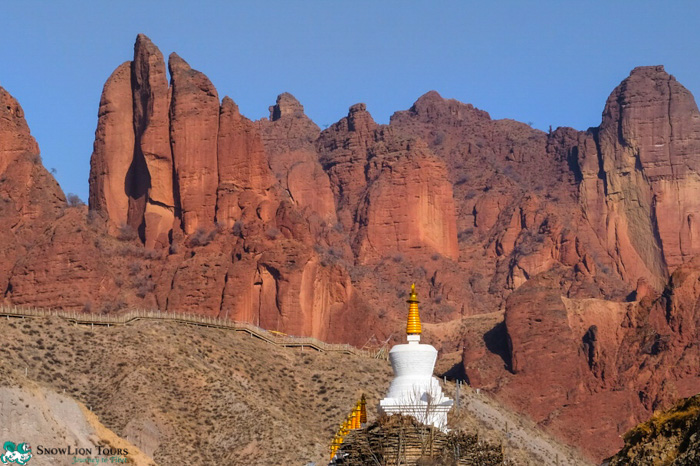
Achung Namdzong Nunnery in Kanbula National Park.
Afterwards, we will drive up to the Tibetan villages, from where we can see another highlight of the Kanbula national park – a vast turquoise lake deeply nested in this vast valley. There are several places to stop while descending from the villages back to the town. In the afternoon, we will continue driving along the Yellow River shores and reach the Tibetan city of Rebkong (Tongren).
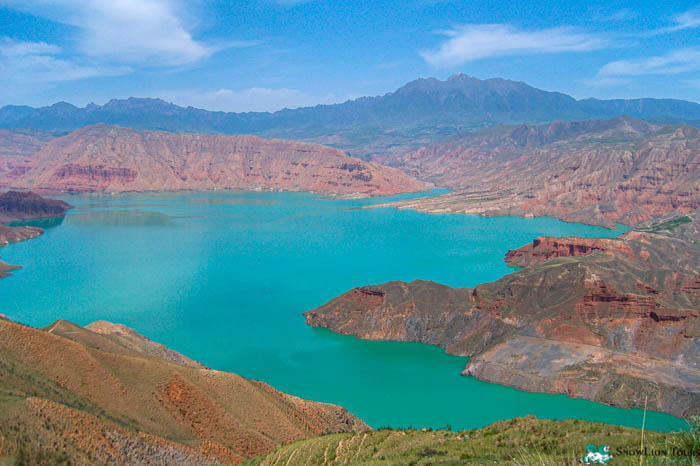
The turquoise Lake inside Kanbula National Park.
Day 3: Rebkong / Tongren – Xining via Shachung Monastery
Today we will have a full day to explore Rebkong – a Tibetan town with many Buddhist monasteries, temples, sacred stupas, and hermitages. First, we will visit the Rongwo monastery, which is the largest monastery in Huangnan Tibetan Prefecture. Rongwo monastery was founded in 1301 by the rulers of Rebkong. Nowadays, it is the main monastery in the area that offers complete monastic education in Gelug tradition. It has three colleges: the Kalacakra College, the Tantric College, and the Dialectic College.

Pilgrims in Rongwo Monastery in Rebkong / Tongren
After exploring the ancient temples of Rongwo monastery, we will drive to Senggeshung monastery, also known as Wutun Si. Wutun Si Monastery is a large complex consisting of several giant stupas, Assembly hall, Tara hall, Compassion Buddha hall, and many other temples. The village surrounding the monastery is primarily known for their thangka painting artists whose skills are famous all over Tibet. We can visit one of the thangka galleries to see how the Tibetan traditional thangkas are made.
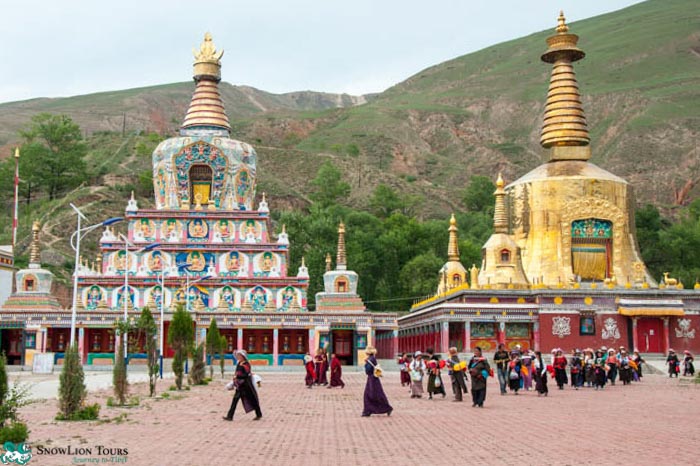
Two giant stupas in Wutu Si Monastery in Rebkong.
Afterwards, we will drive back to Xining via Shachung monastery, one of the oldest monasteries in Qinghai province. We will hike along the mountain ridge from its location on the mountain while taking in views of Tibetan farming fields on one side and of a steep cliff that overlooks the Yellow River on the other side. This part of the Yellow River is the clearest and beautiful and part of the Yellow River in China. The big open valley with bends of Yellow River makes the monastery one of the most beautiful monasteries in Qinghai province.
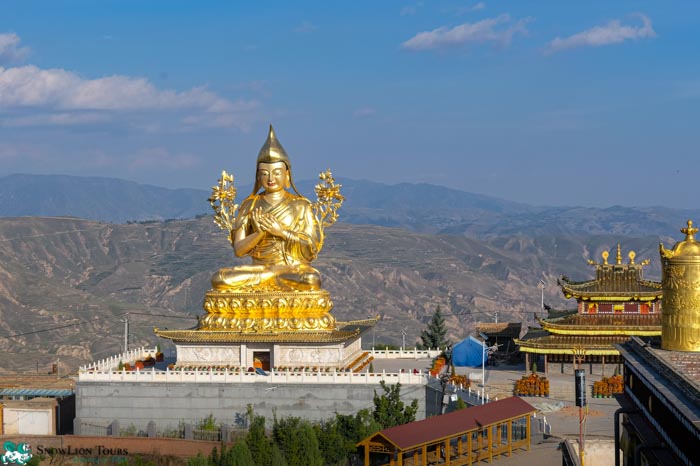
Statue of Tsongkhapa in Shachung Monastery.
Day 4: Depart from Xining
Say Goodbye to your guide and driver
